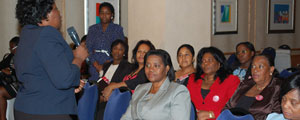
MEDIA voices in Southern Africa are still heavily staked against women as they account for a paltry 19% of sources of news in both print and broadcast bulletins in the sub-region, a report by South African-based Gender Links has revealed. Khanyile Mlotshwa Staff Reporter
The disparity comes despite women constituting 51% of the population in Africa, according to the United Nations.
“In 2011, Gender Links conducted further monitoring of 31 media houses in 13 countries not included in the Gender and Media Progress Study as part of the Centres of Excellence for Gender in the Media Initiative,” the report stated.
“The average score for the 108 media houses in 13 countries still came up at 19%. This shows that progress in ensuring women’s views and voices in the media is still painfully slow.”
Gender Links is a Southern African non-governmental organisation, headquartered in Johannesburg, South Africa, that promotes gender equality and justice across the 15 countries of the region. The organisation said the issue of gender representation in the media was important because, according to their recent study, “citizens held media to a higher standard, giving an overall score of 55%”.
“However, this is much higher than the past three annual Citizen Score Card (CSC) averages, while the overall score remained at 40%,” the report read. “This year’s CSC is gender-disaggregated.
“Women and men’s scores are similar: men rated the media at 55% compared to women at 54%.”
The report stated that as a result of bias against women in news sourcing, debates continued to show that freedom of information was often not understood to include equal voice for women and men.











